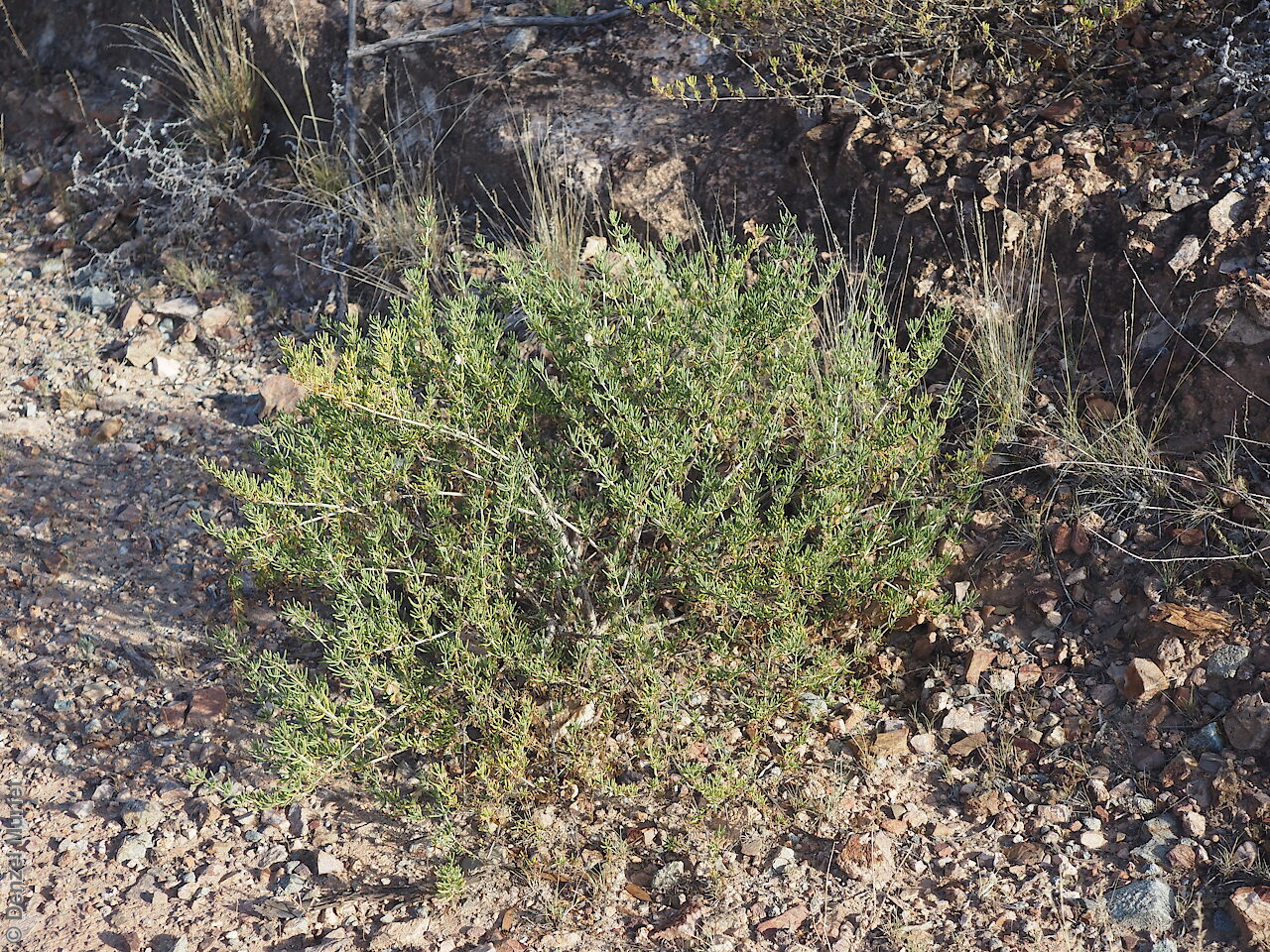
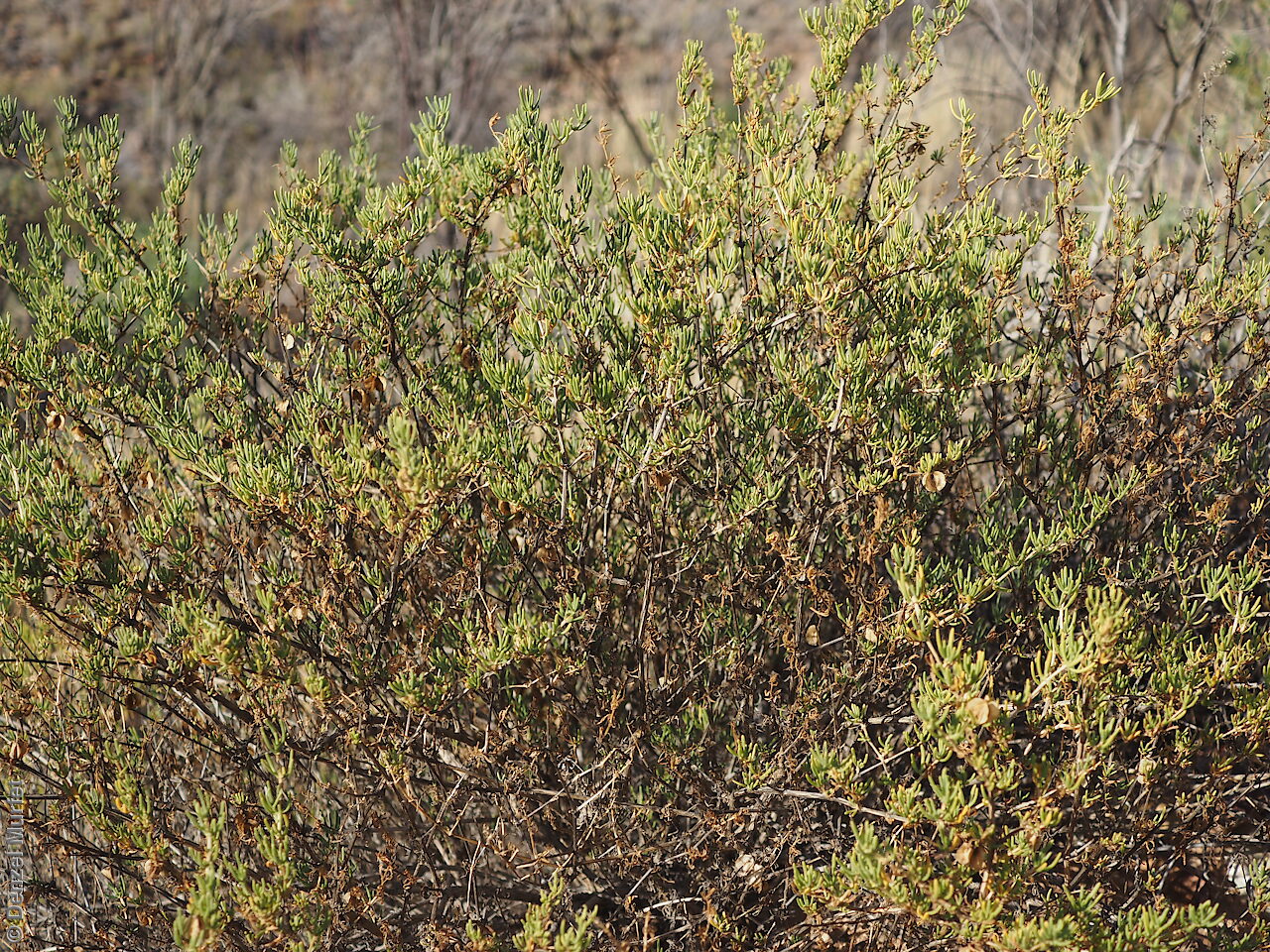
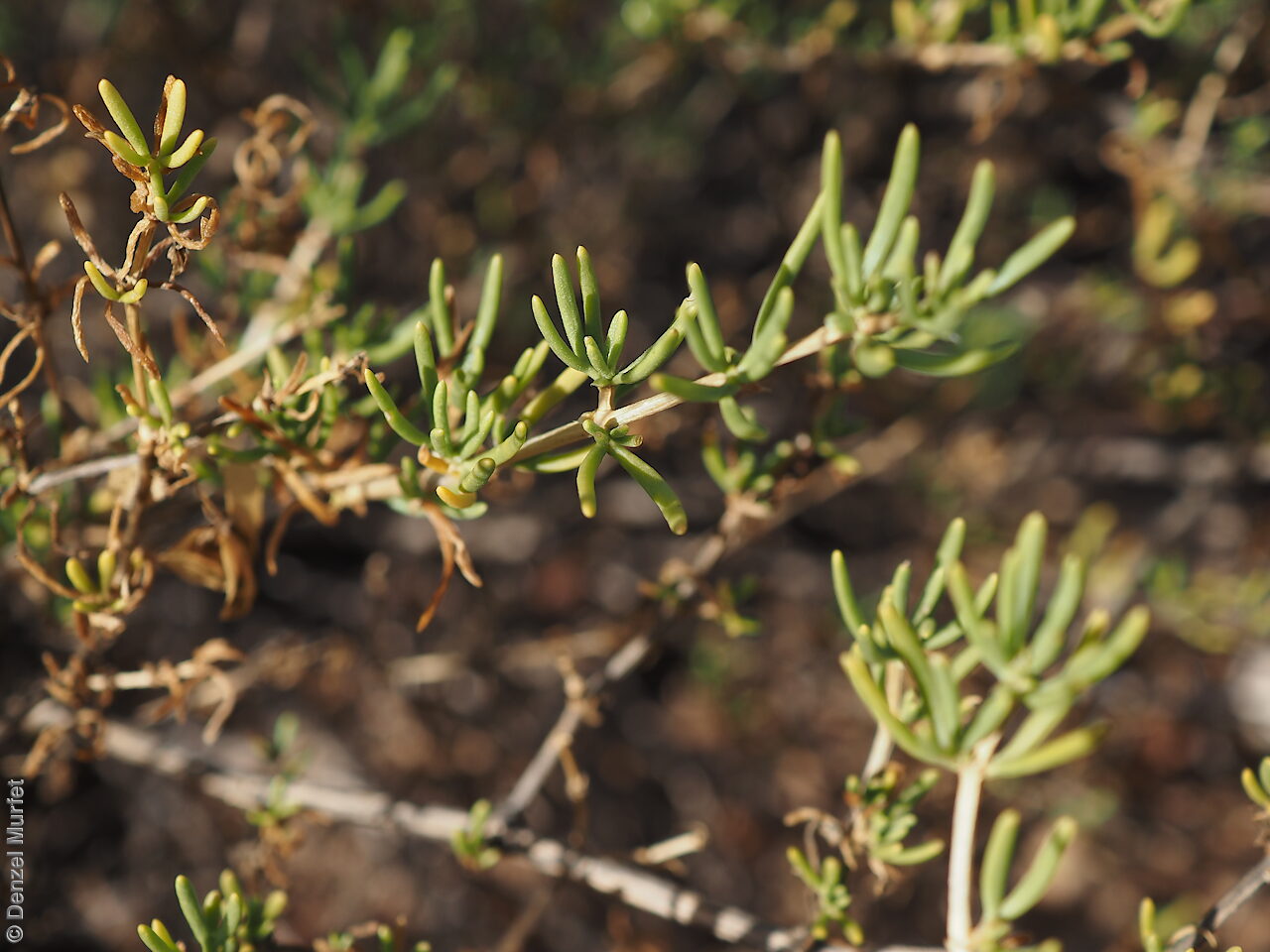
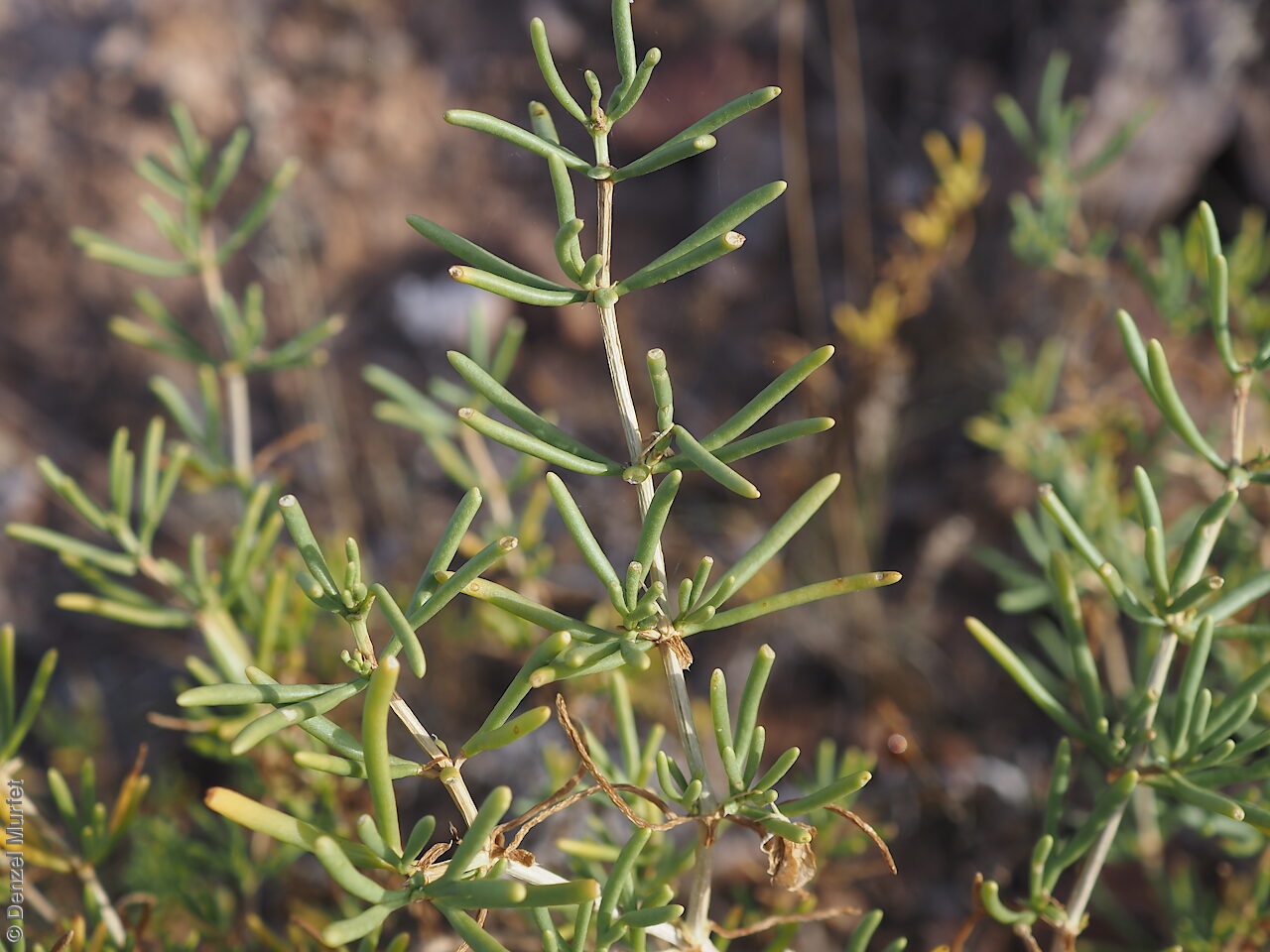
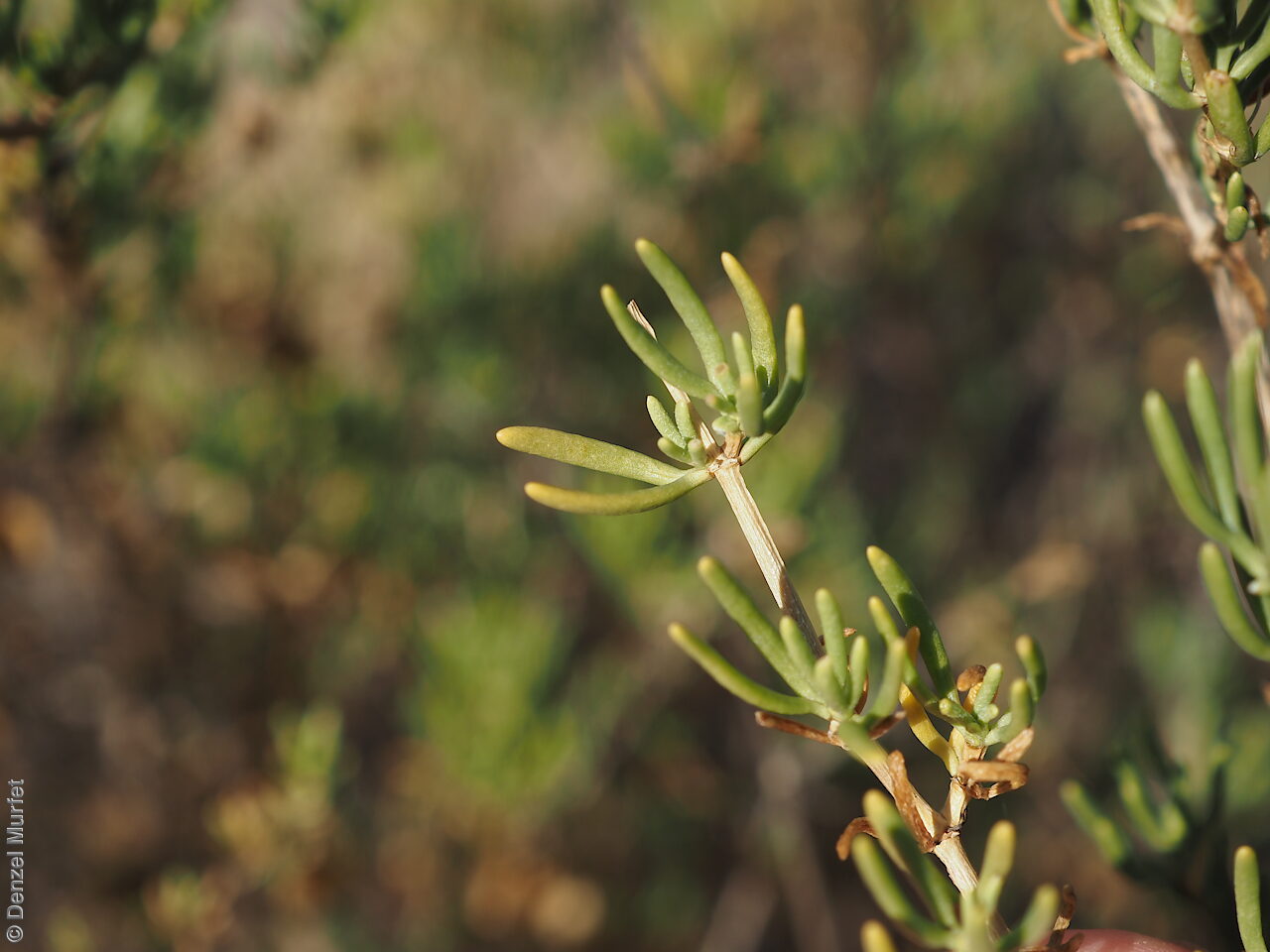
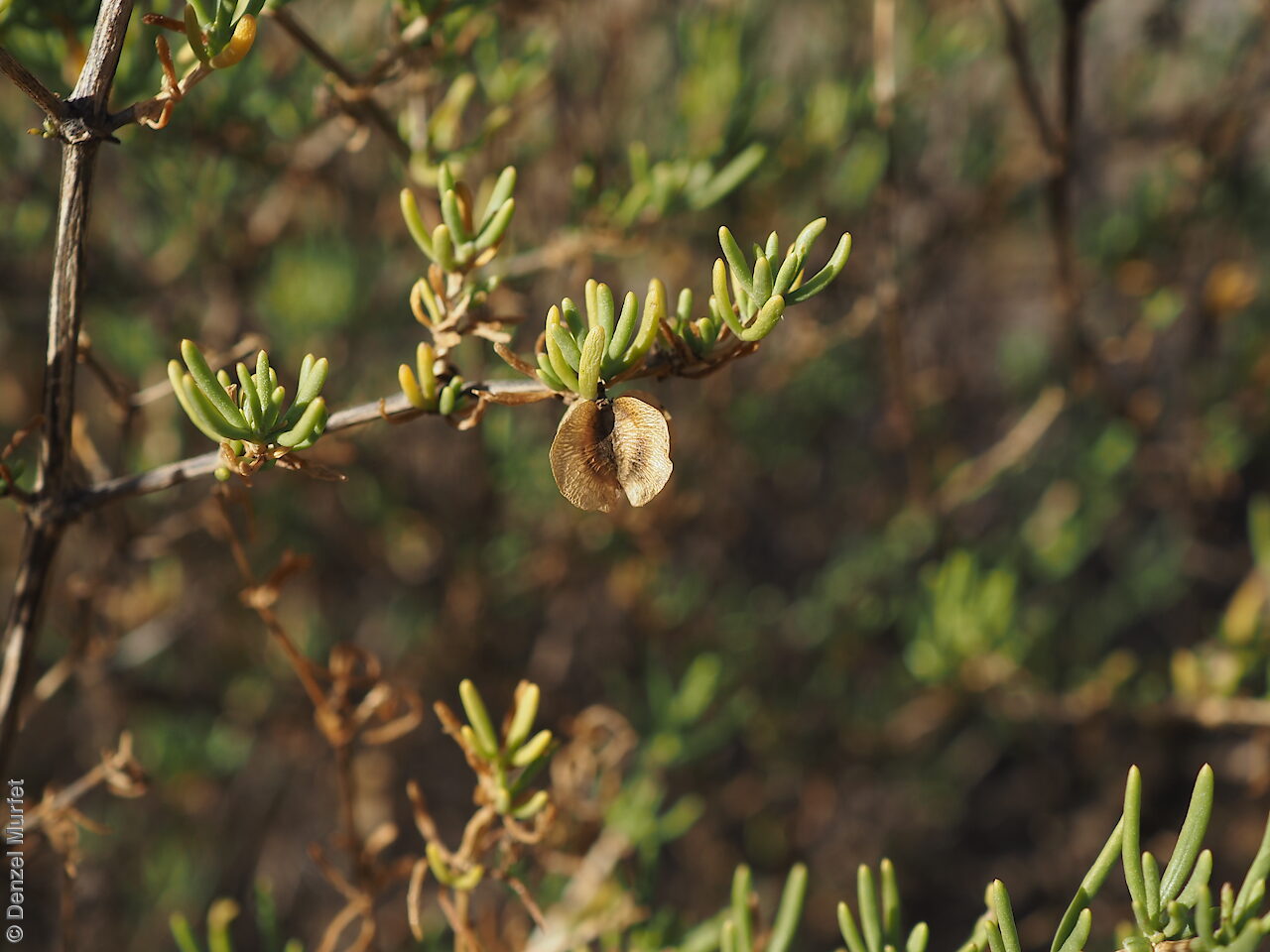
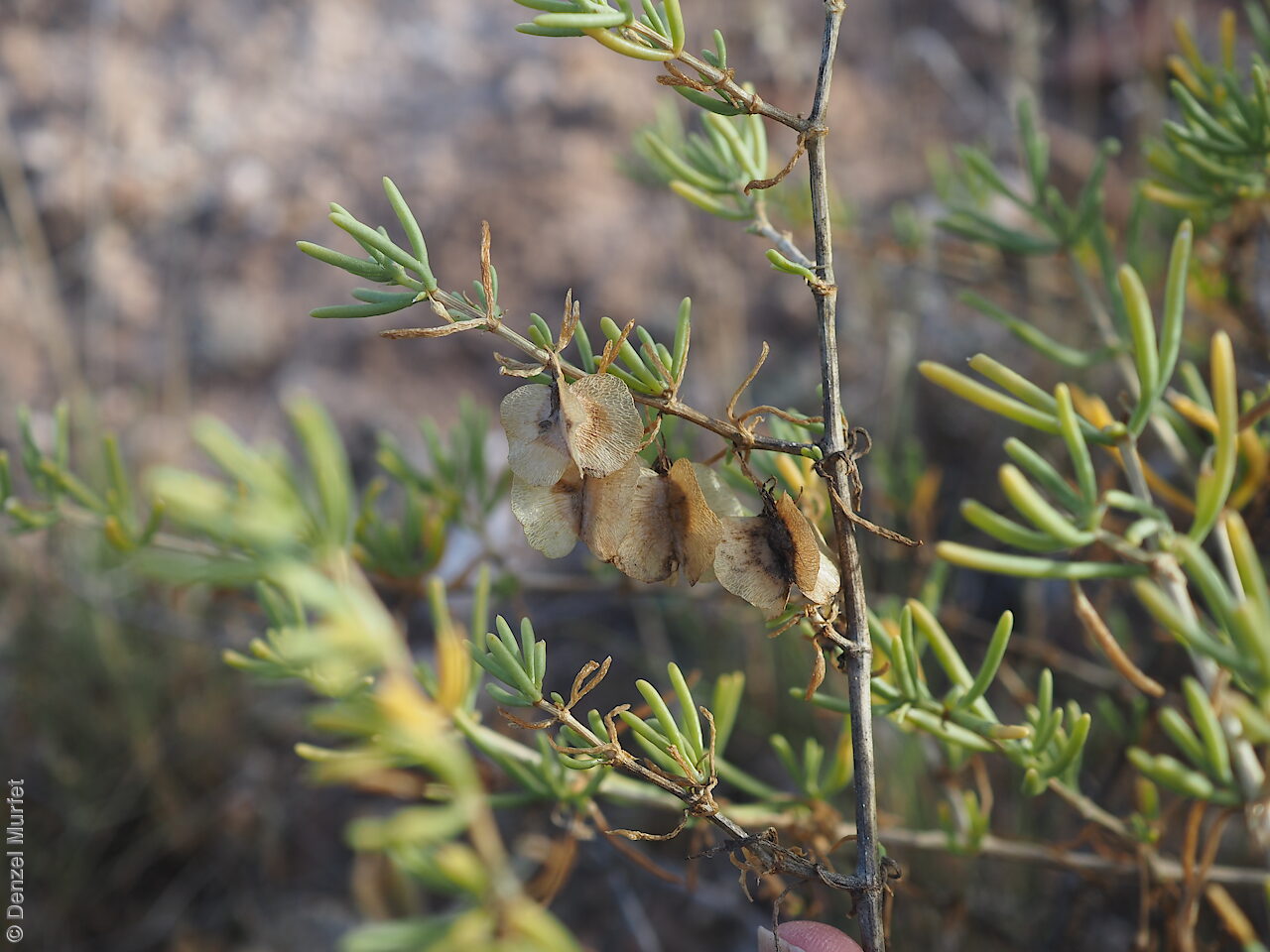
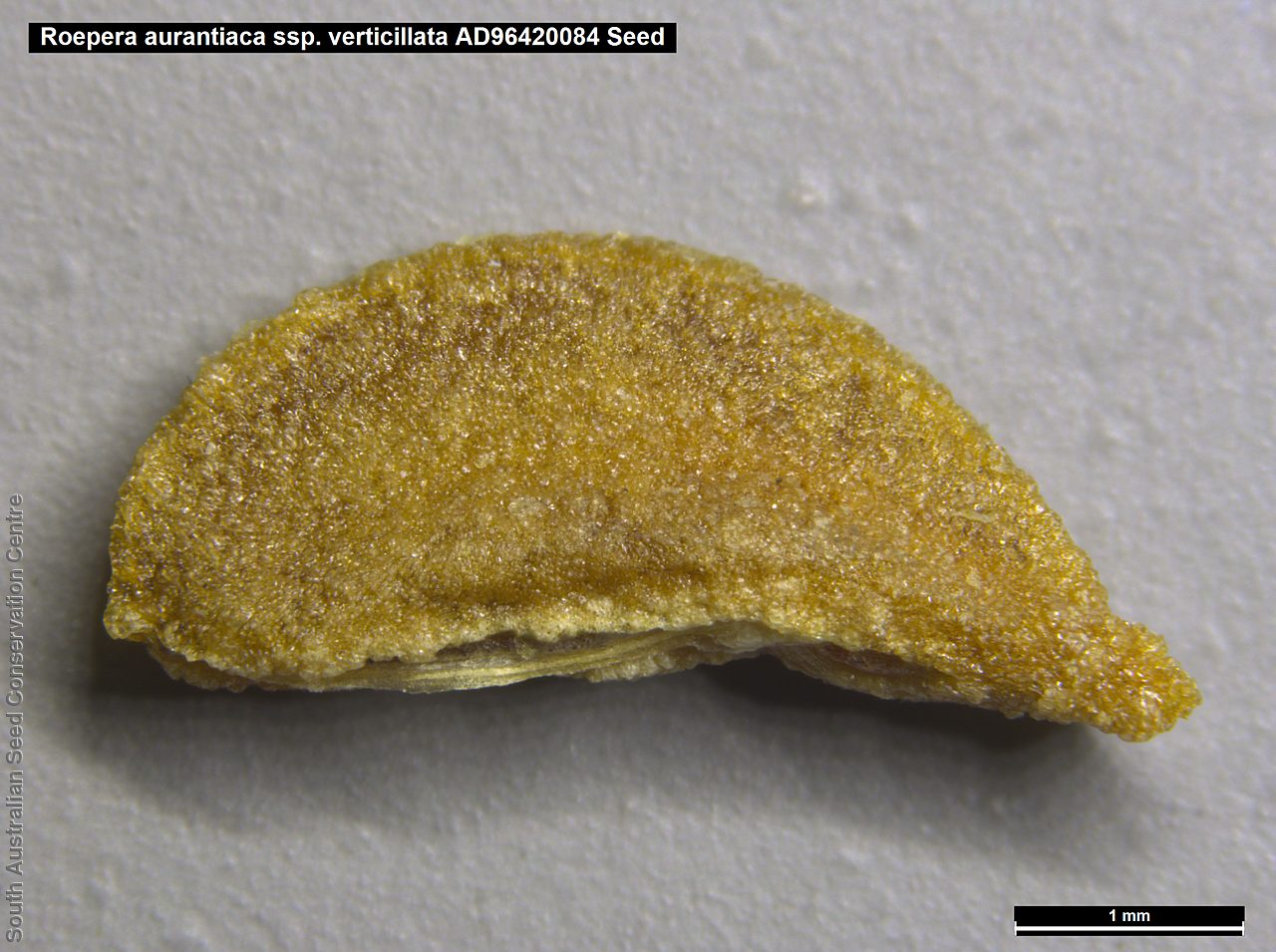
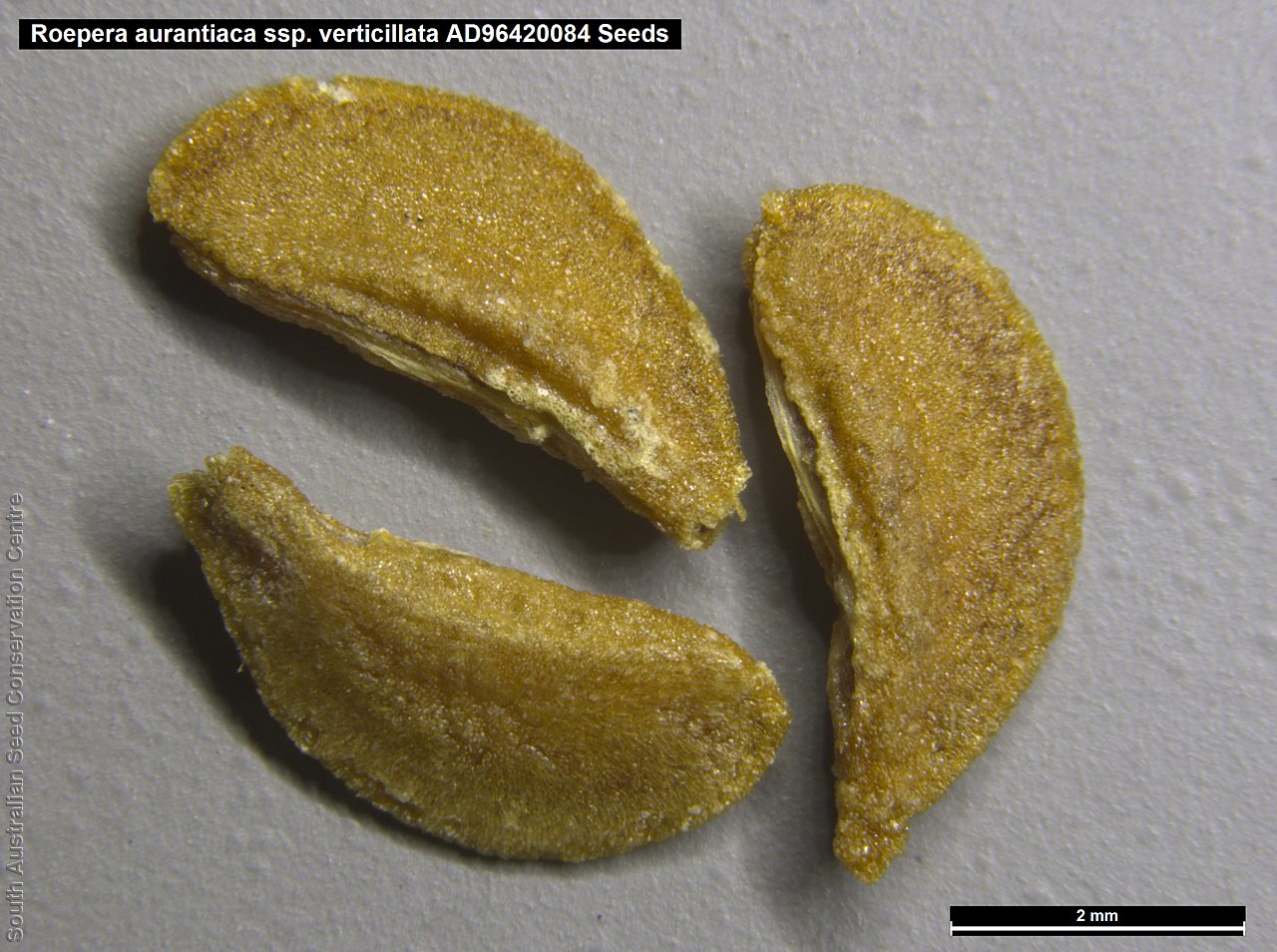


Botanical art
Prior names
Zygophyllum aurantiacum ssp. verticillatum
Zygophyllum "Terete leaves"(D.E.Symon 14690)
Common names
Sessile Twinleaf
Shrubby Twinleaf
Etymology
Roepera (formally Zygophyllum which is from the Greek 'zygon' meaning pair and 'phyllon' meaning leaf; referring to the pair of leaflets making up each leaf) is named after Johannes August Christian Roeper (1801 -1885), a German botanist and physician. Aurantiaca from the Latin 'aurantiacus' meaning yellow-orange. Verticillata alludes to the leaves which are sessile and bilobed from the base, appear more like 4 linear leaves arising from each axil at first glance.
Distribution and status
Endemic to South Australia and found in the Lake Eyre, Gairdner-Torrens, Flinders Ranges and Eastern regions. Native. Common in South Australia.
Herbarium regions: Lake Eyre, Gairdner-Torrens, Flinders Ranges, Eastern
AVH map: SA distribution map (external link)
Plant description
Low, spreading, glabrous, perennial shrub to 60 cm high and wide. Leaves sessile (bilobed from base) with leaflets succulent, linear or narrowly elliptic to 28 mm long and 3.2 mm wide, not articulated at base, obtuse, acute or truncate at the apex; petiole lacking. Flowering between July and October. Fruits are yellow-brown, four segmented capsule with paper wings. Seeds are orange-brown, wedge-shaped to 5 mm long and 2.5 mm wide. Seed embryo type is spatulate fully developed.
Seed collection and propagation
Collect seeds between October and January. Collect semi-dried and dried capsules by running your hands through the stems of the plant. Mature fruits will come off easily and will have a hard and dark seed inside each segment. Place the capsules in a tray and leave to dry for 1 to 2 weeks, depending on how green the fruit is. Then rub the dried capsules to dislodge the seeds. Use a sieve to remove the unwanted material. Store the seeds with a desiccant such as dried silica beads or dry rice, in an air tight container in a cool and dry place. Seed viability is usually high.